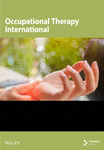Teacher stress and coping strategies used to reduce stress
Abstract
This pilot study investigated teachers' symptoms of stress and their coping strategies. Measurements of ‘stress levels’ and ‘coping strategies’ used were acquired by constructing a questionnaire made up of four individual standardized questionnaires. The data were analysed by a series of correlational analyses that highlighted significant relationships between ways of coping and levels of distress. Differences between the stress-related areas were measured using the Friedman test and Wilcoxon signed rank test for hierarchy. The findings implied that ‘escape avoidance’, ‘accepting responsibility’ and ‘uncontrolled aggression’ were used as negative coping strategies and only one strategy, ‘exercise’, was indicated to be an effective way of coping. The teachers' strategies were examined for similarities and differences with those recommended by occupational therapists. This pilot study was limited to two schools and it is recommended that it be extended to better generalize the results. Furthermore, ways of coping, as measured by psychological measures, do not seem to reduce stress so it is possible that the activity-based Stress Management Questionnaire, as advocated by Stein et al. (2003), might be more advantageous. Copyright © 2005 Whurr Publishers Ltd.




